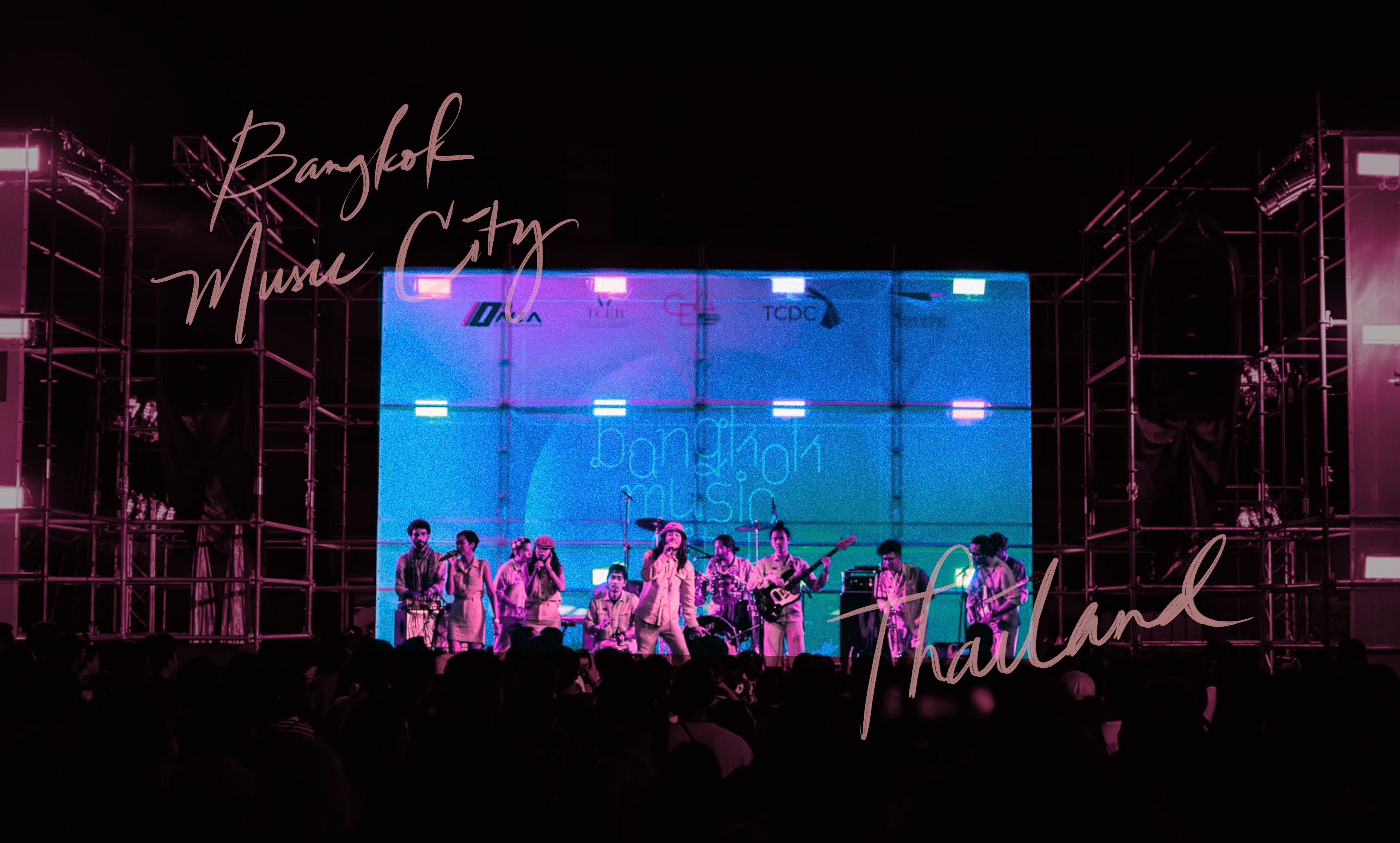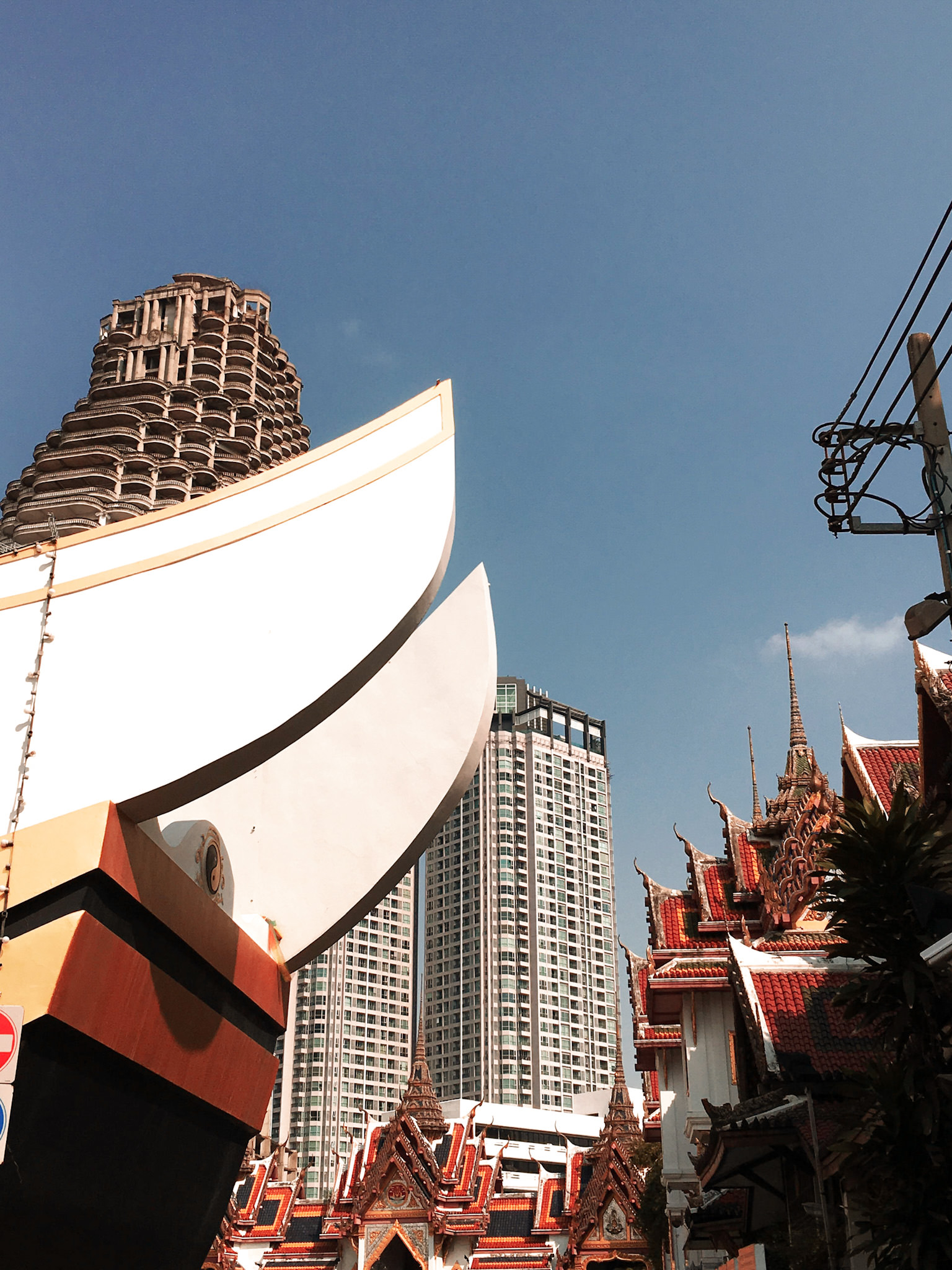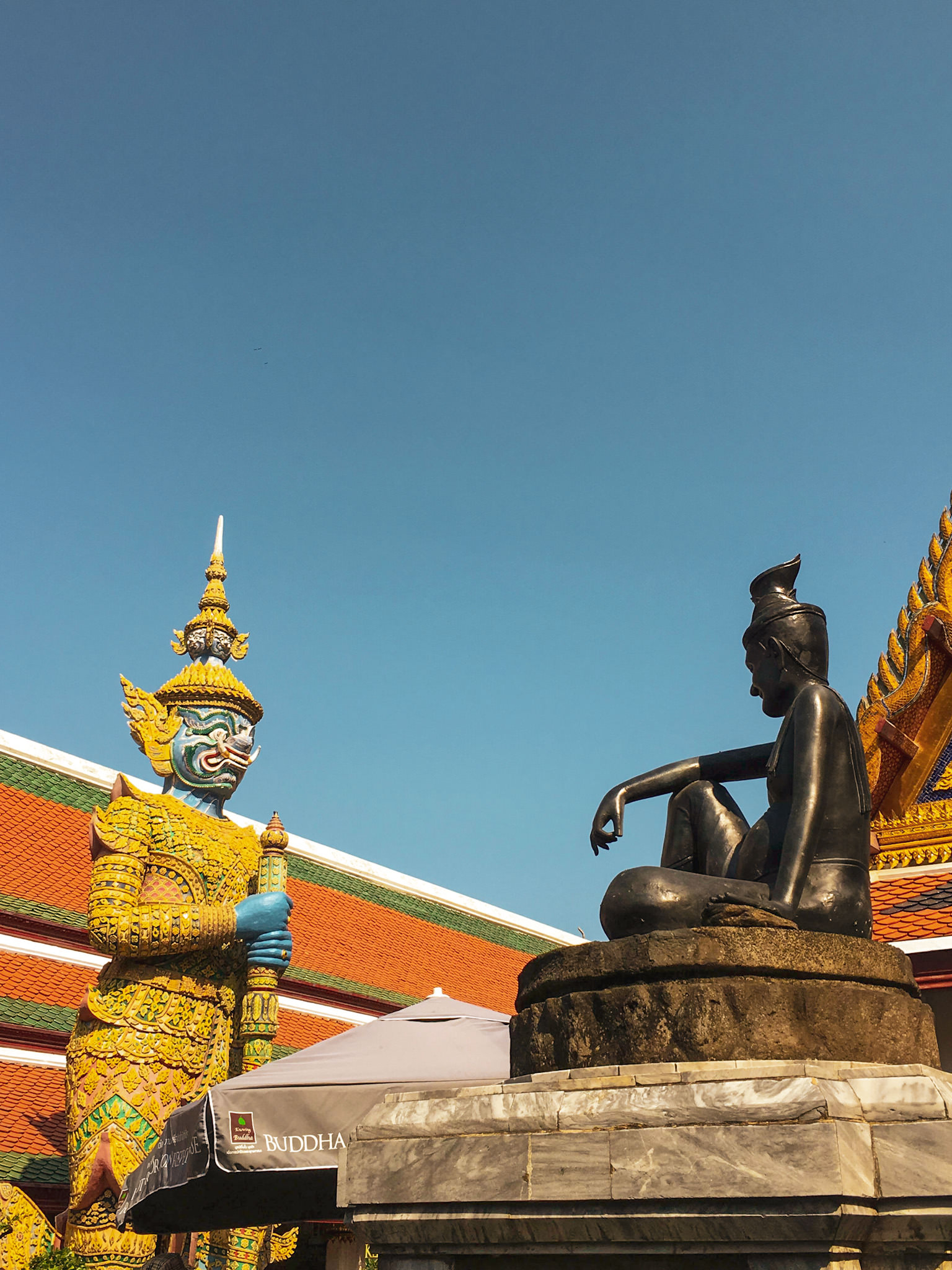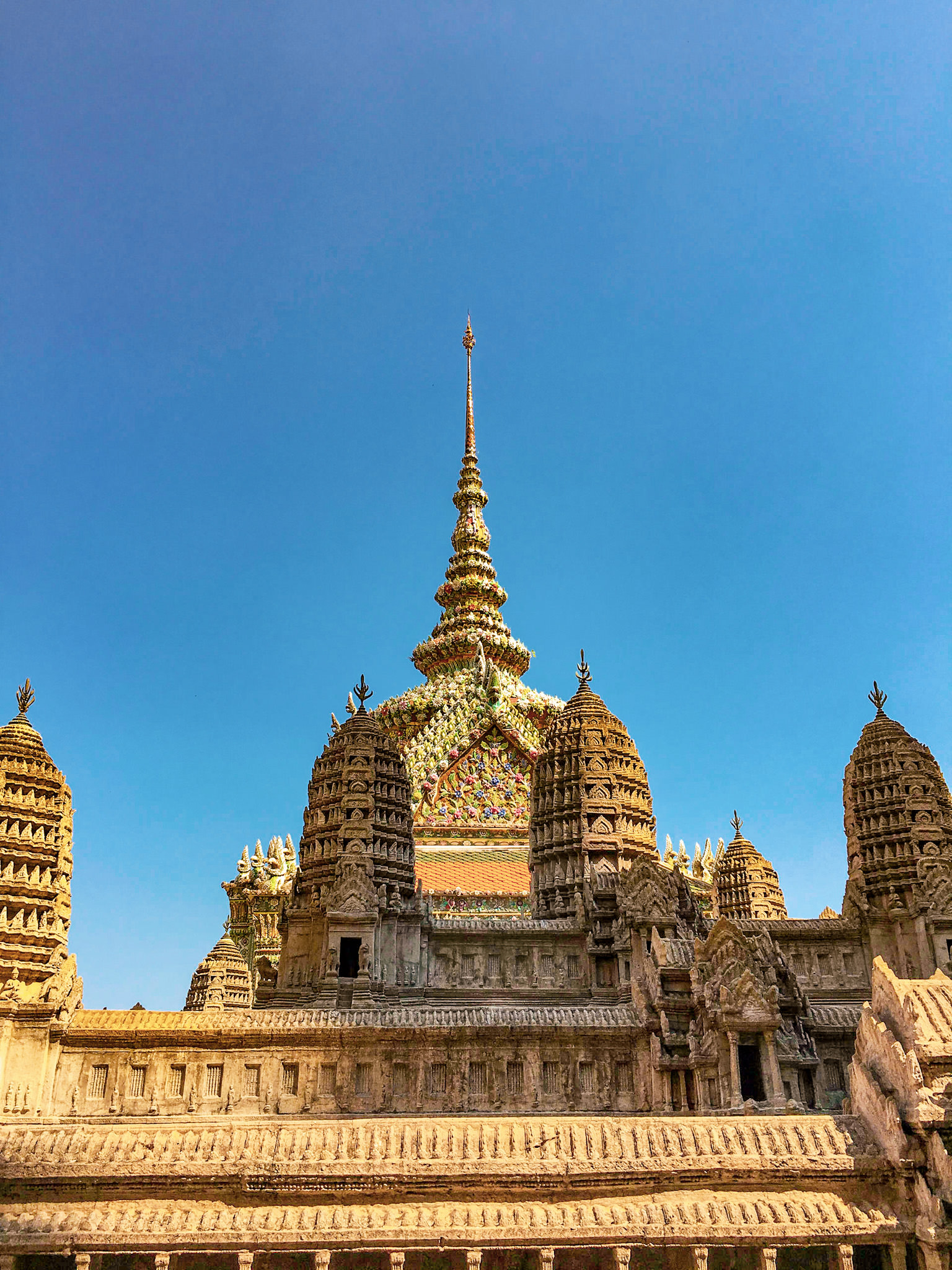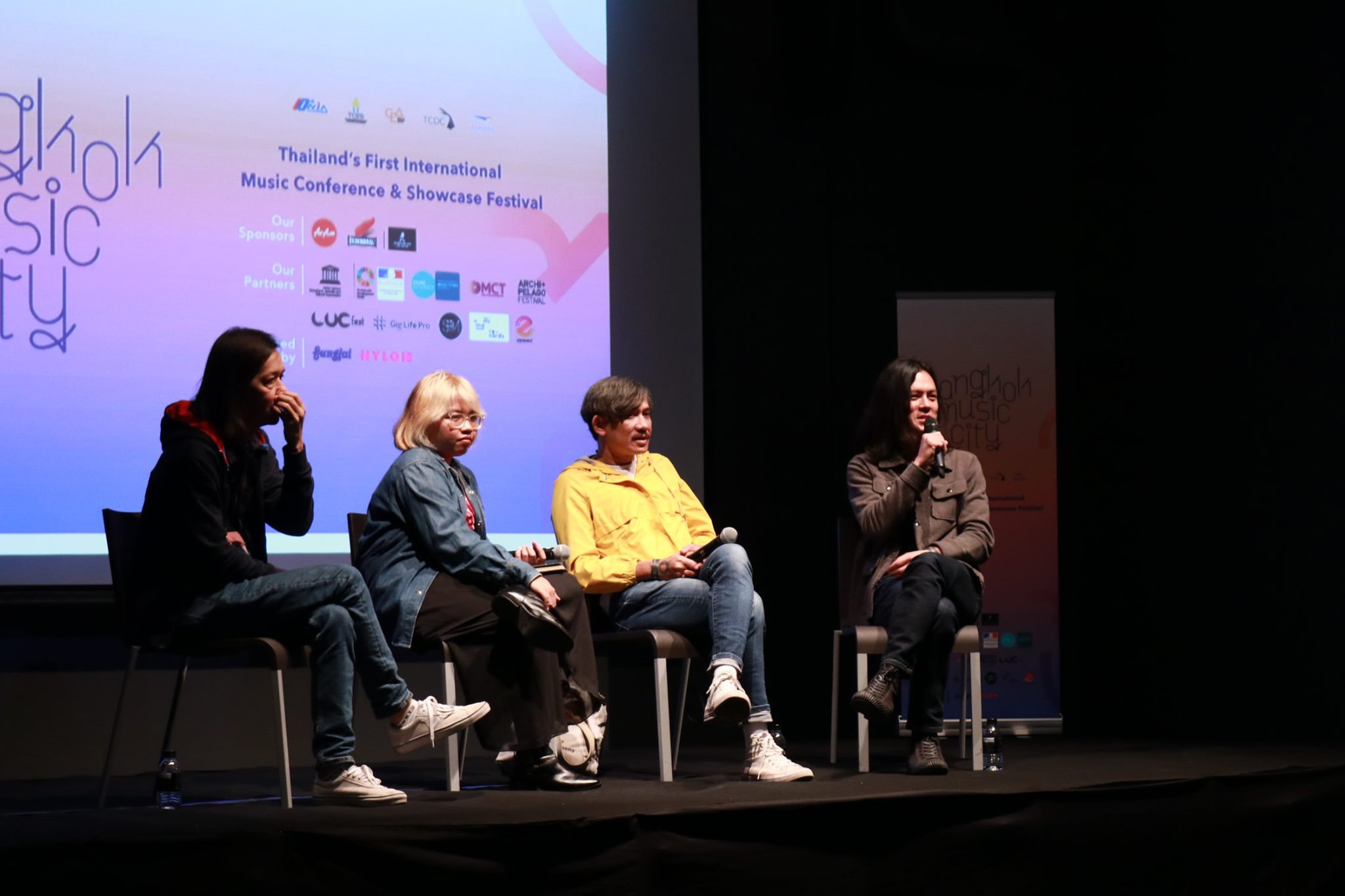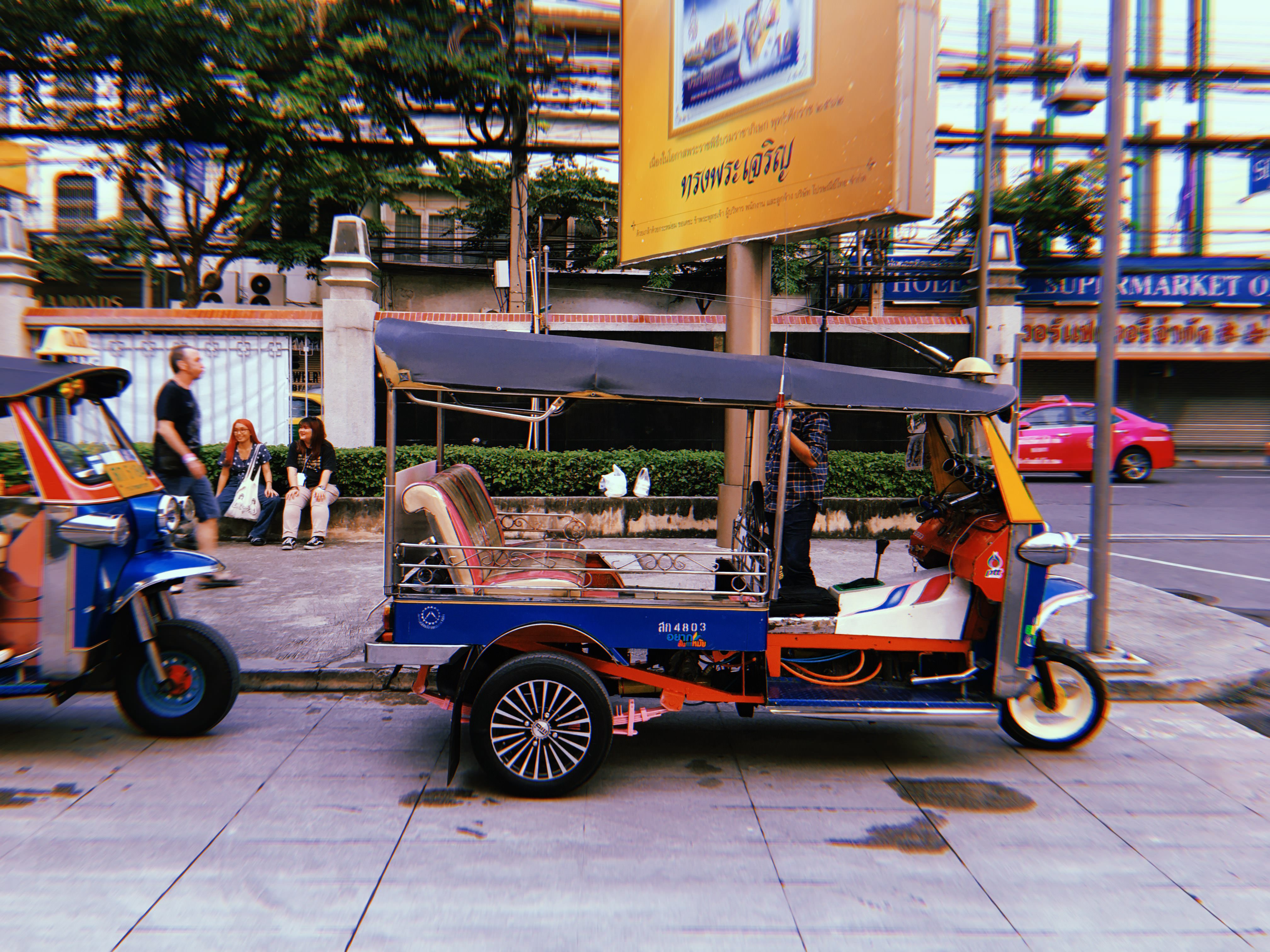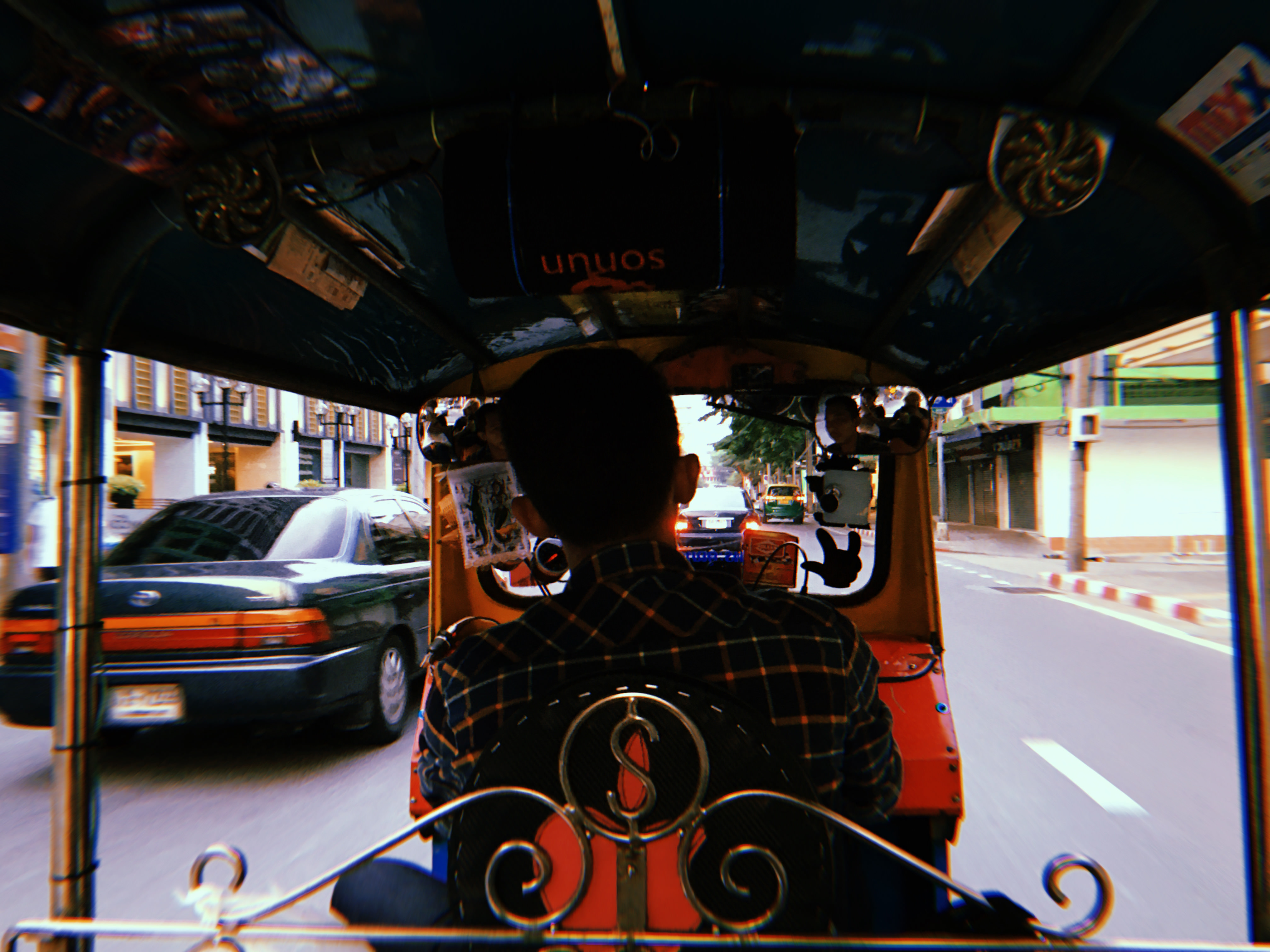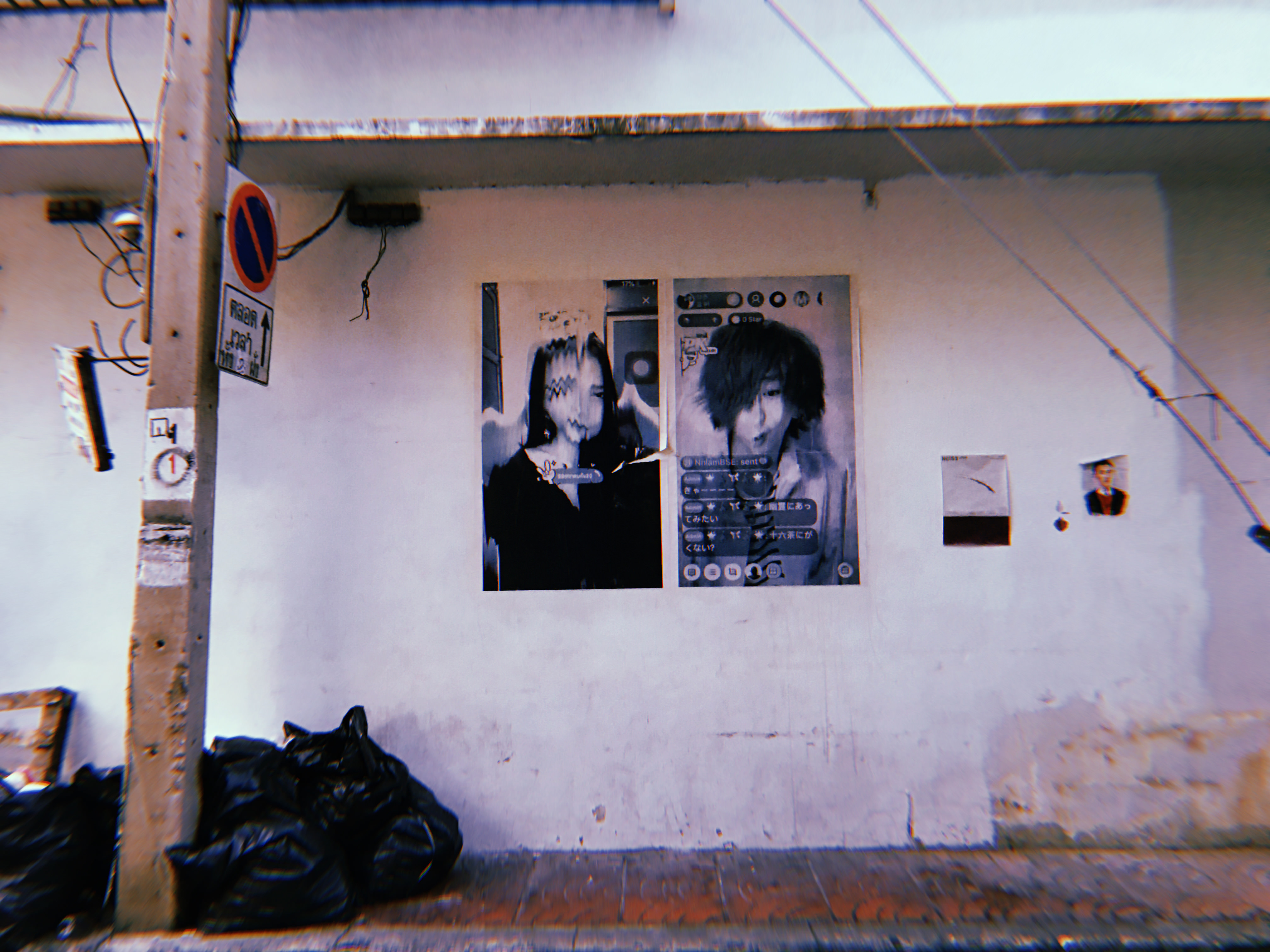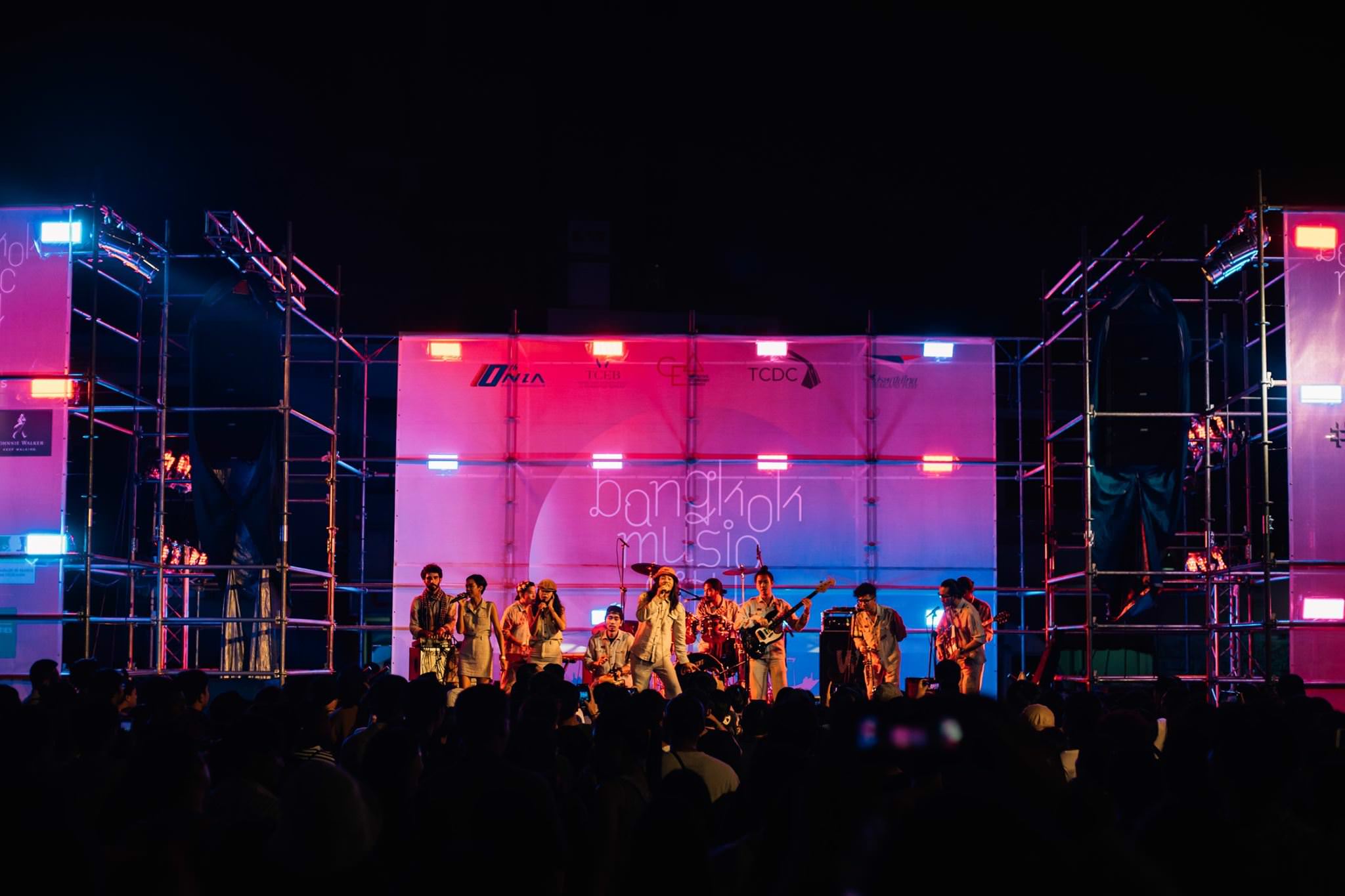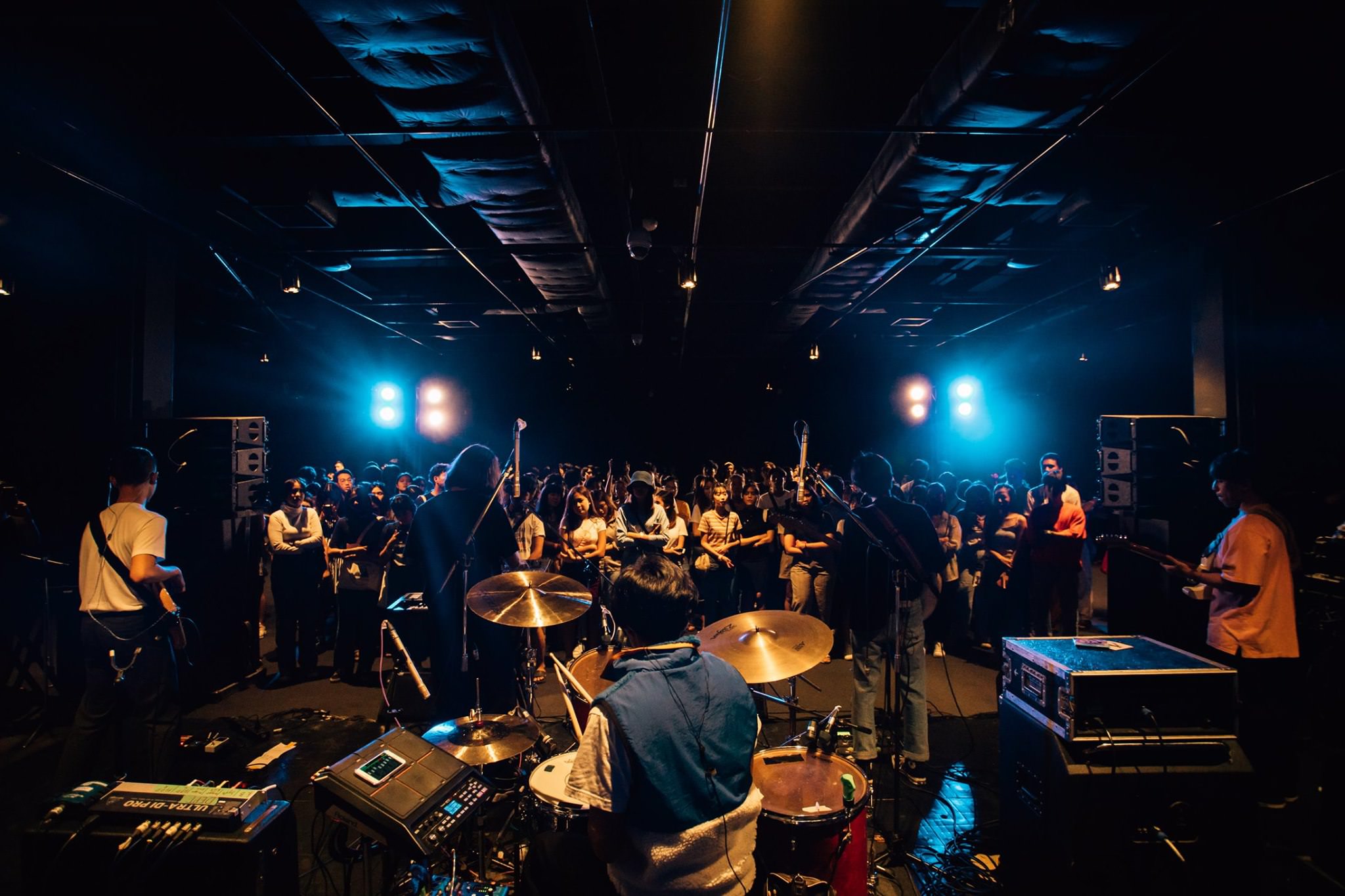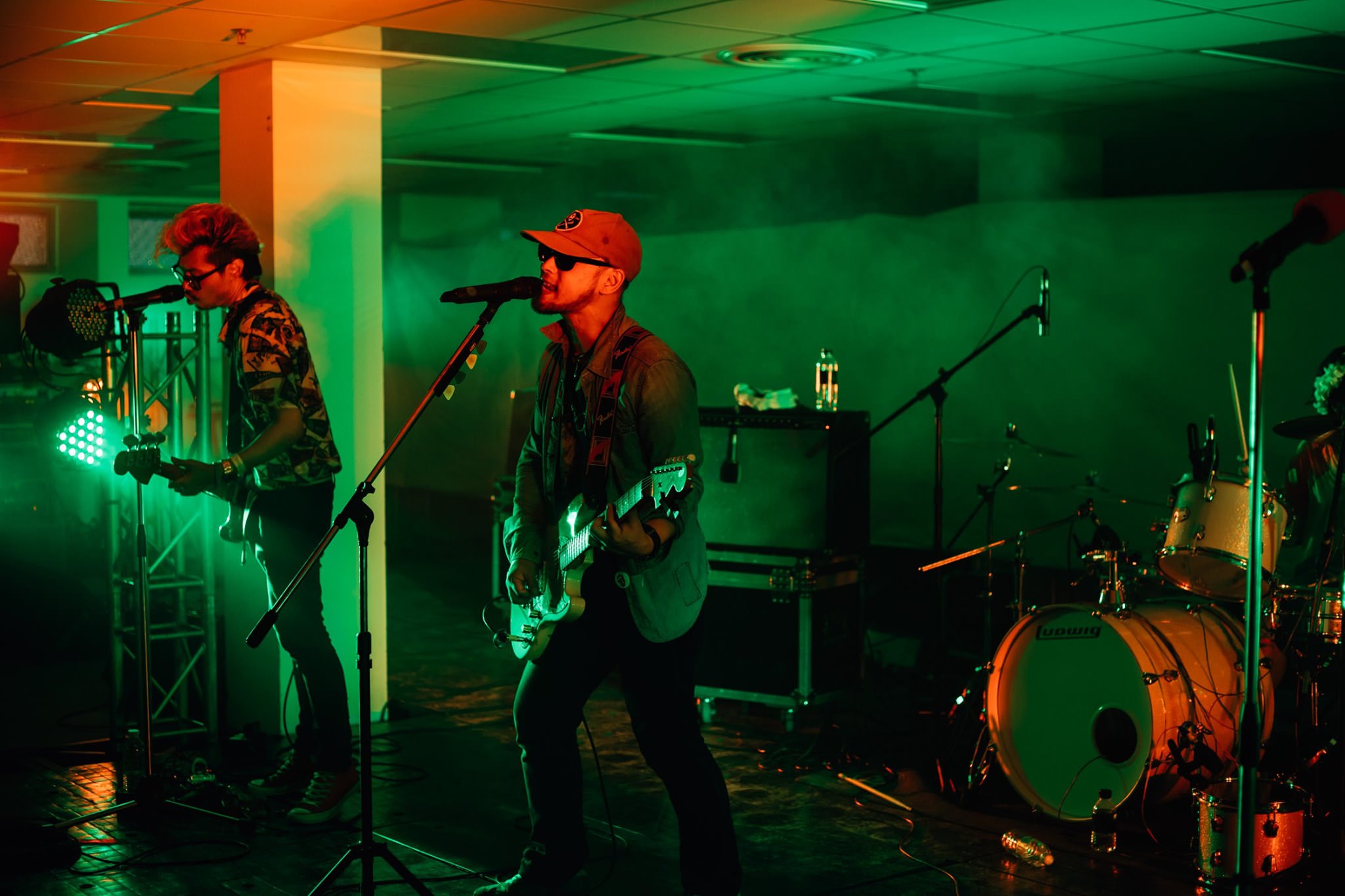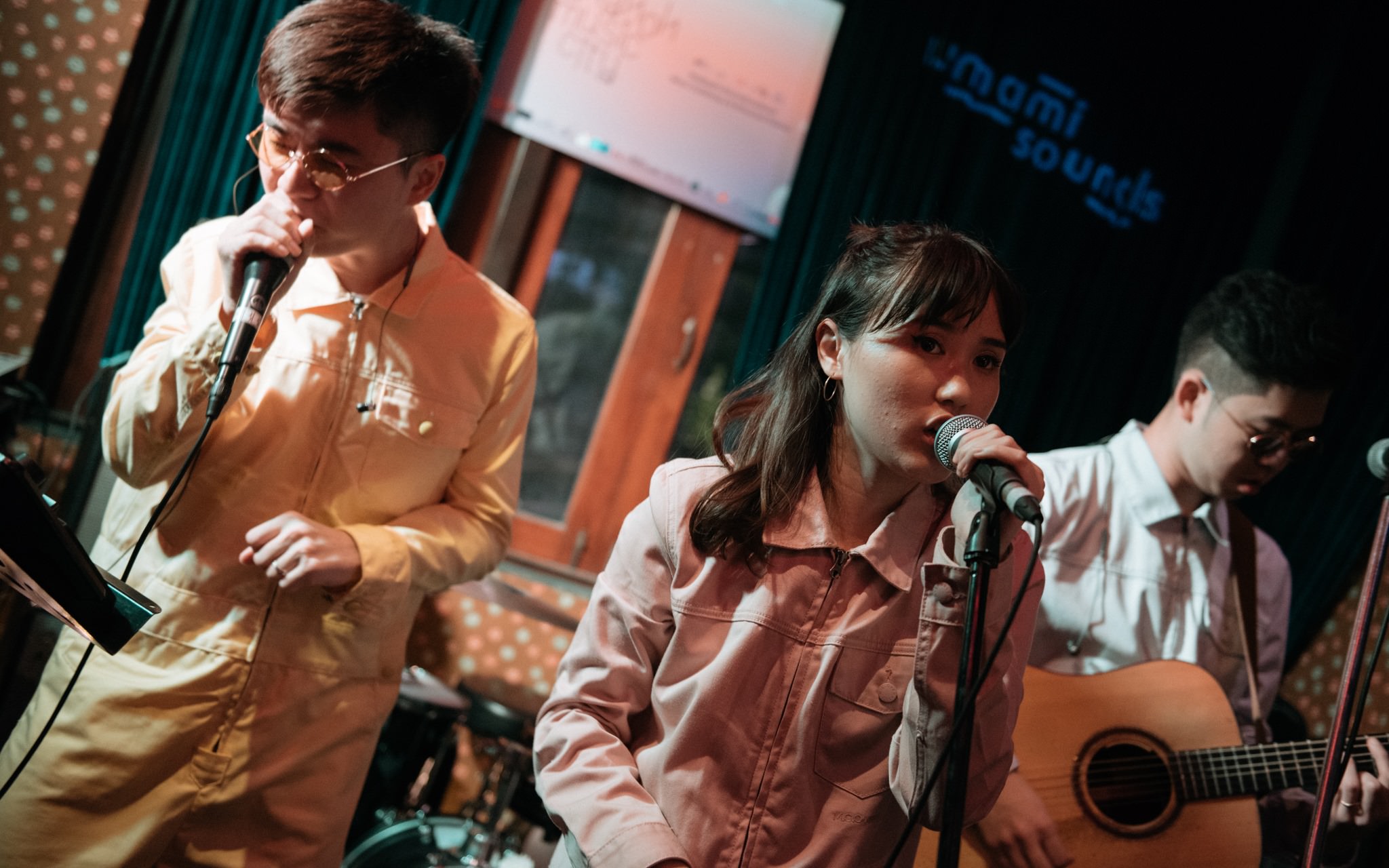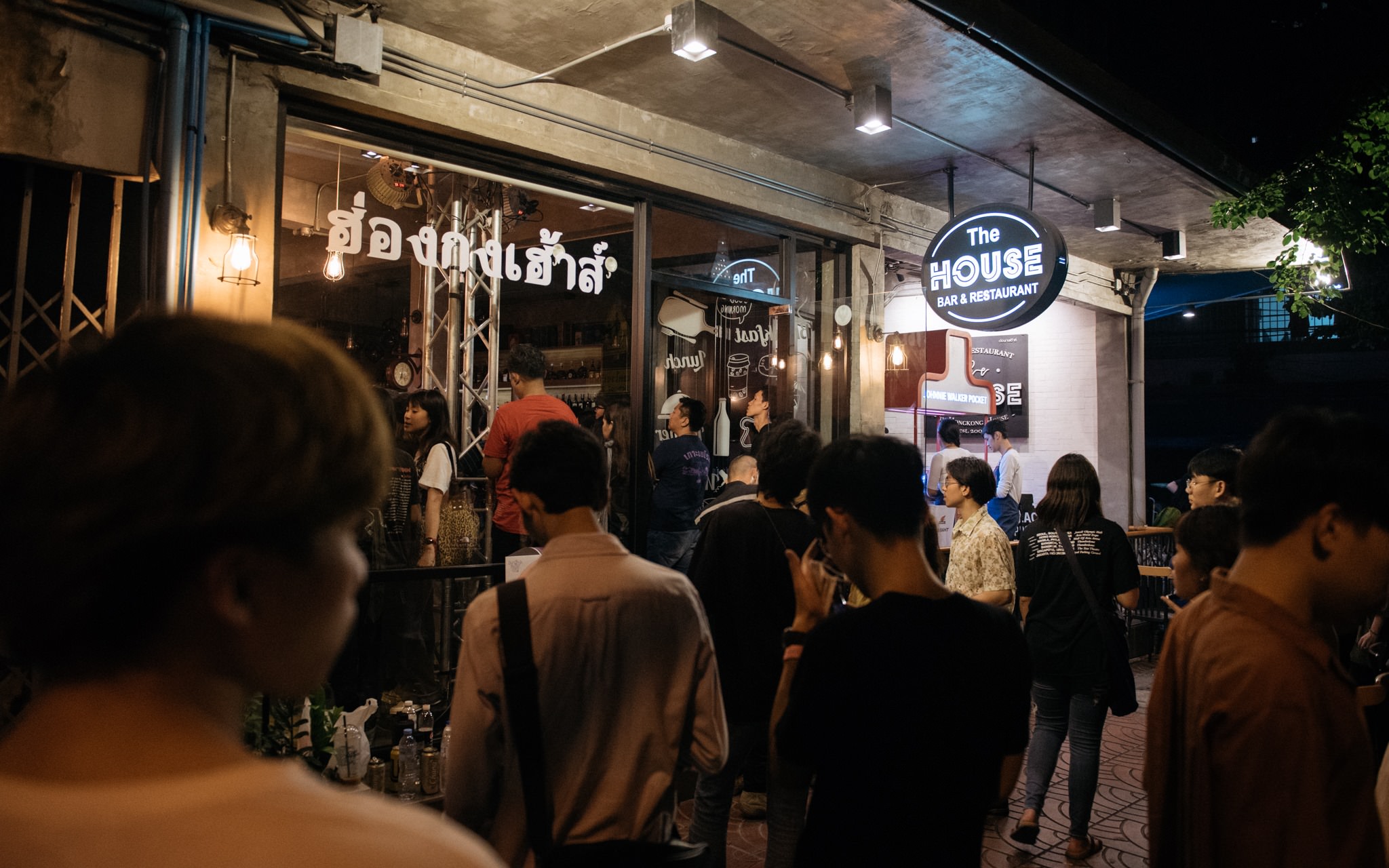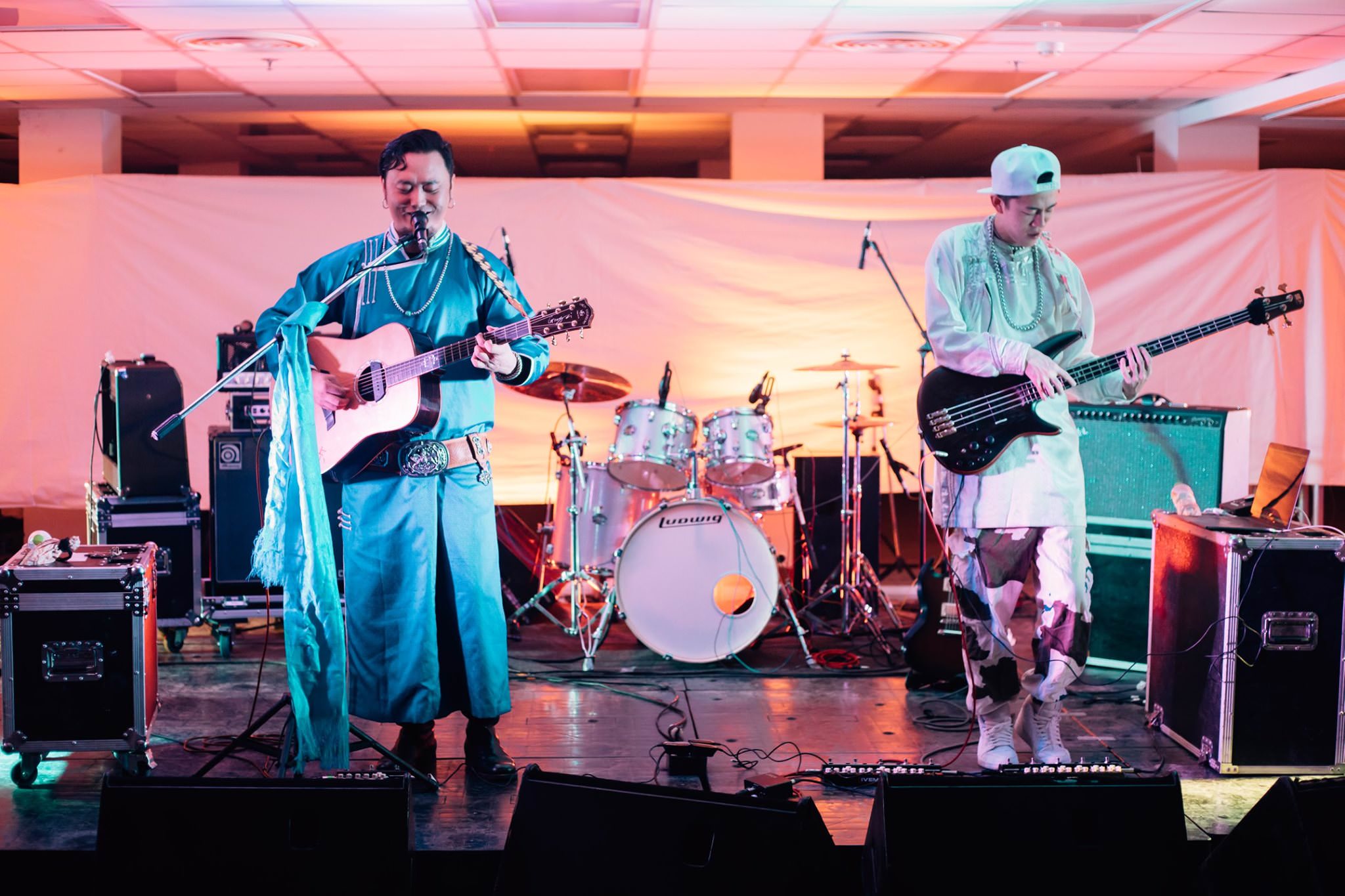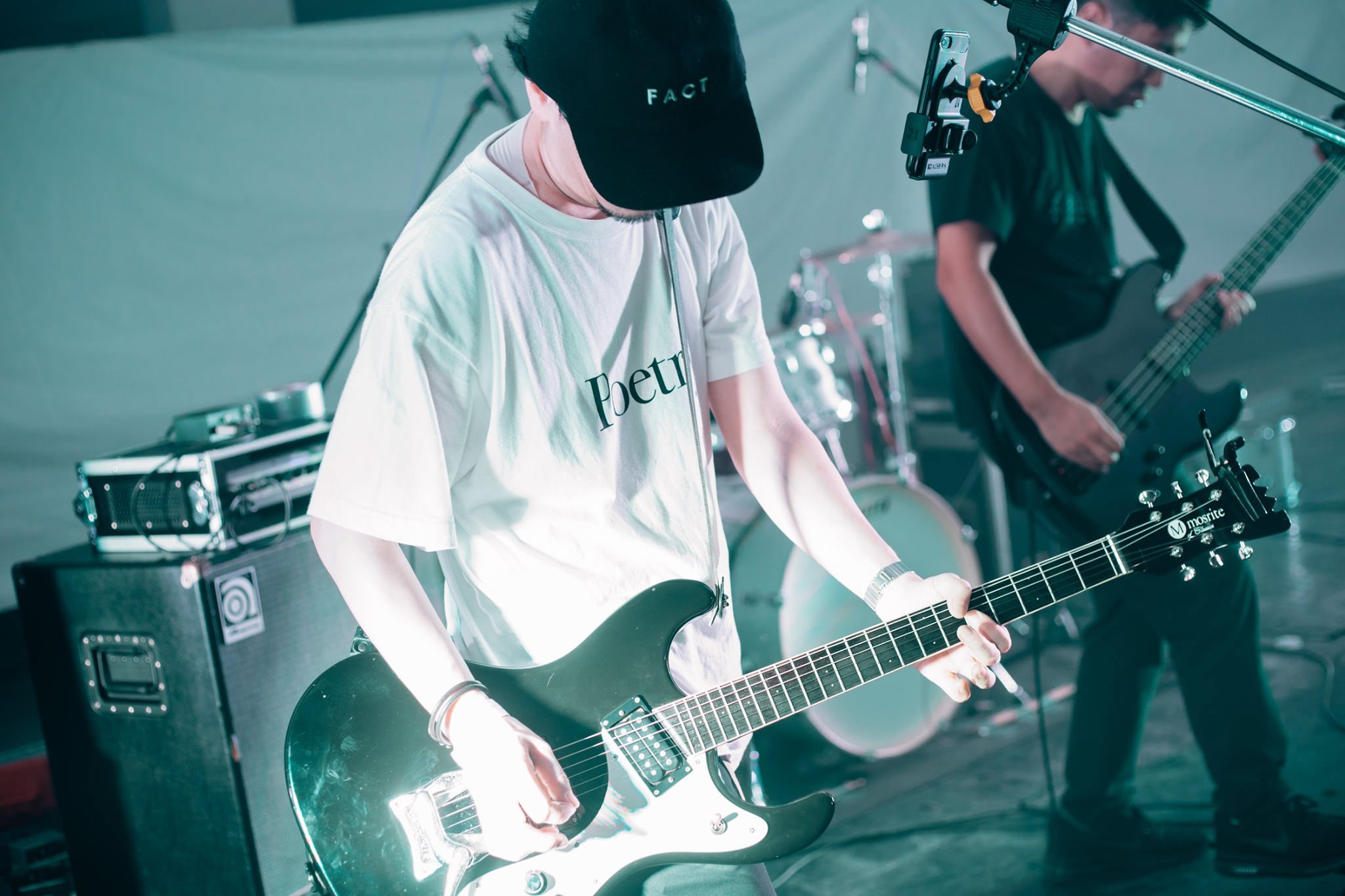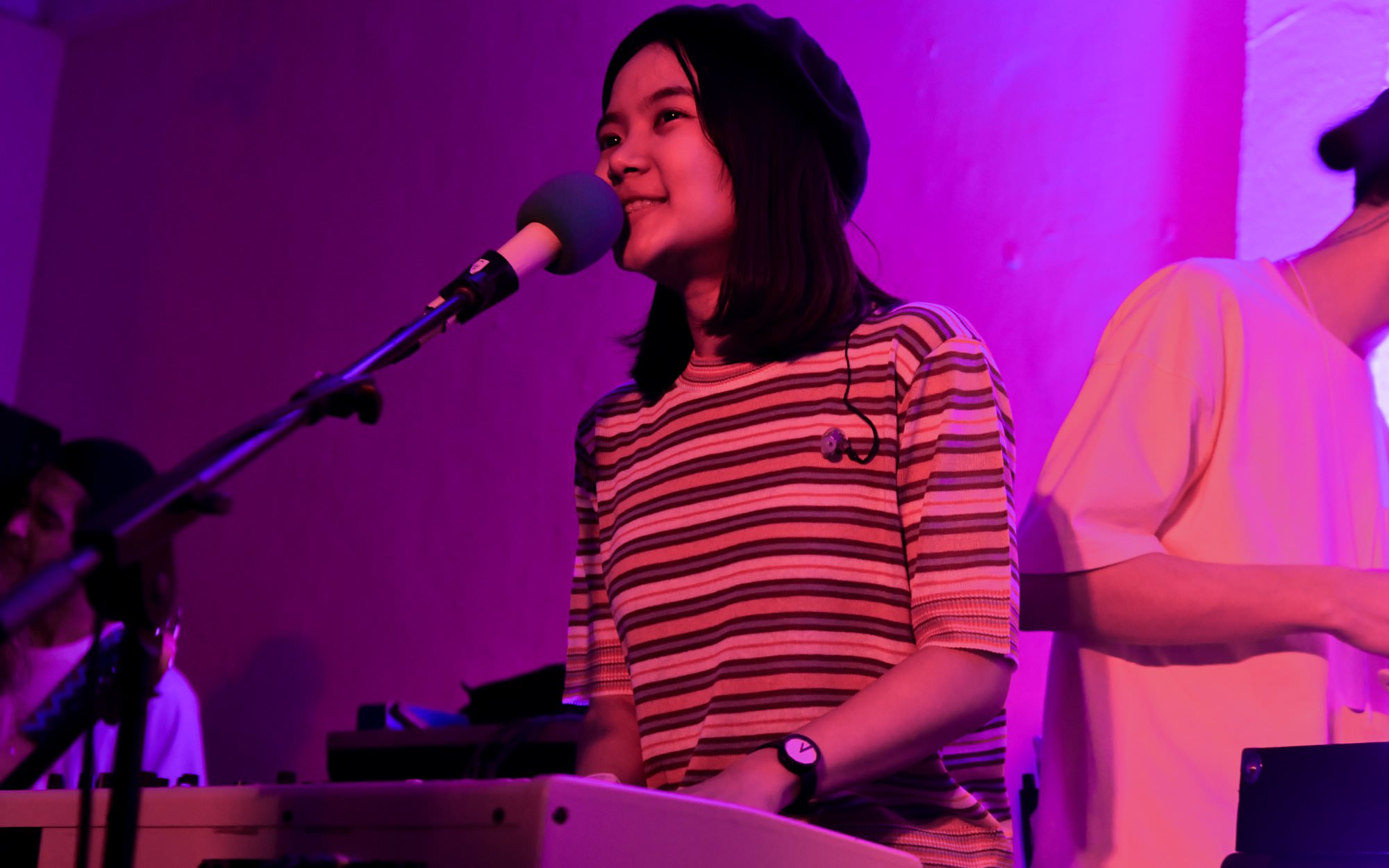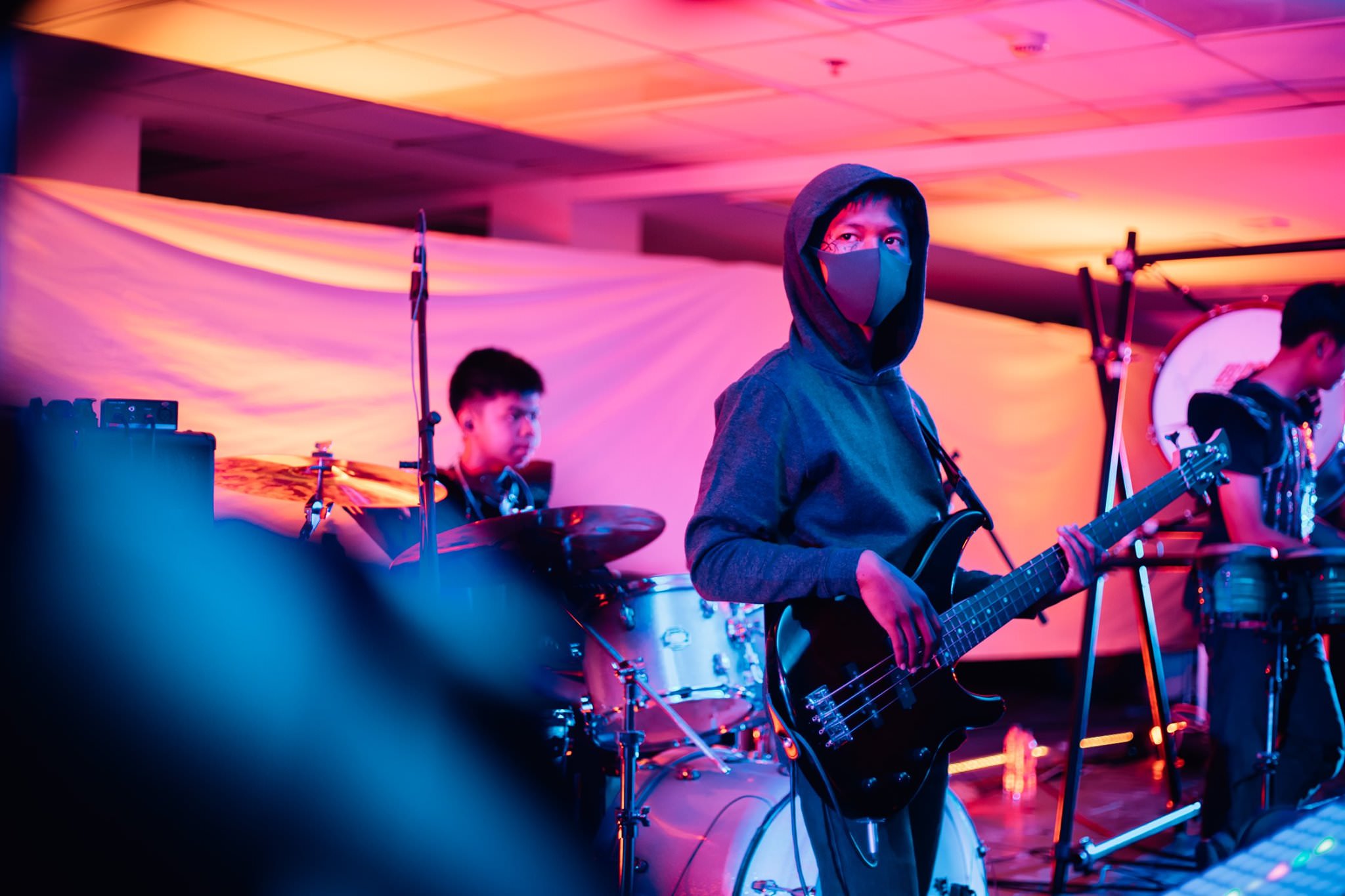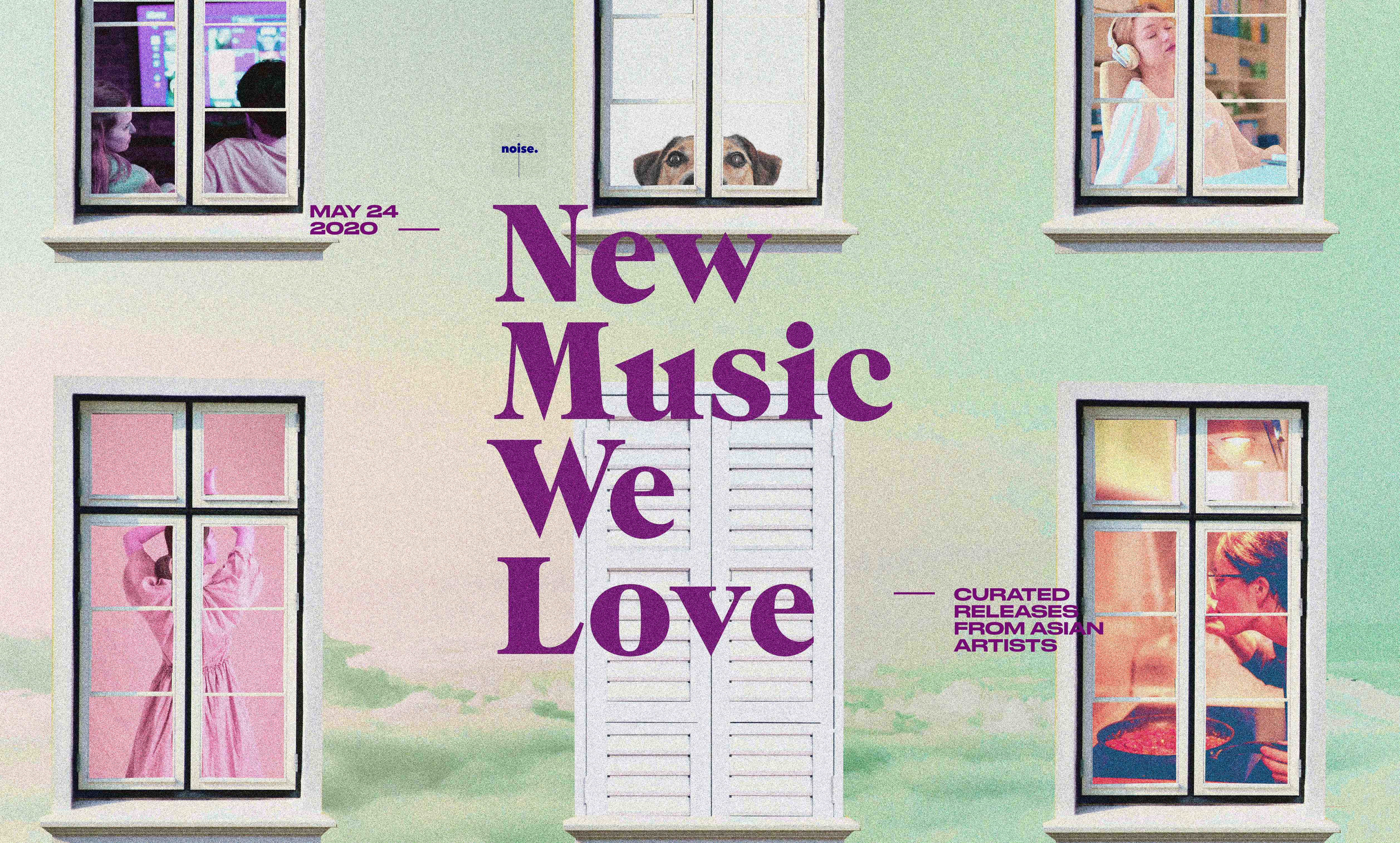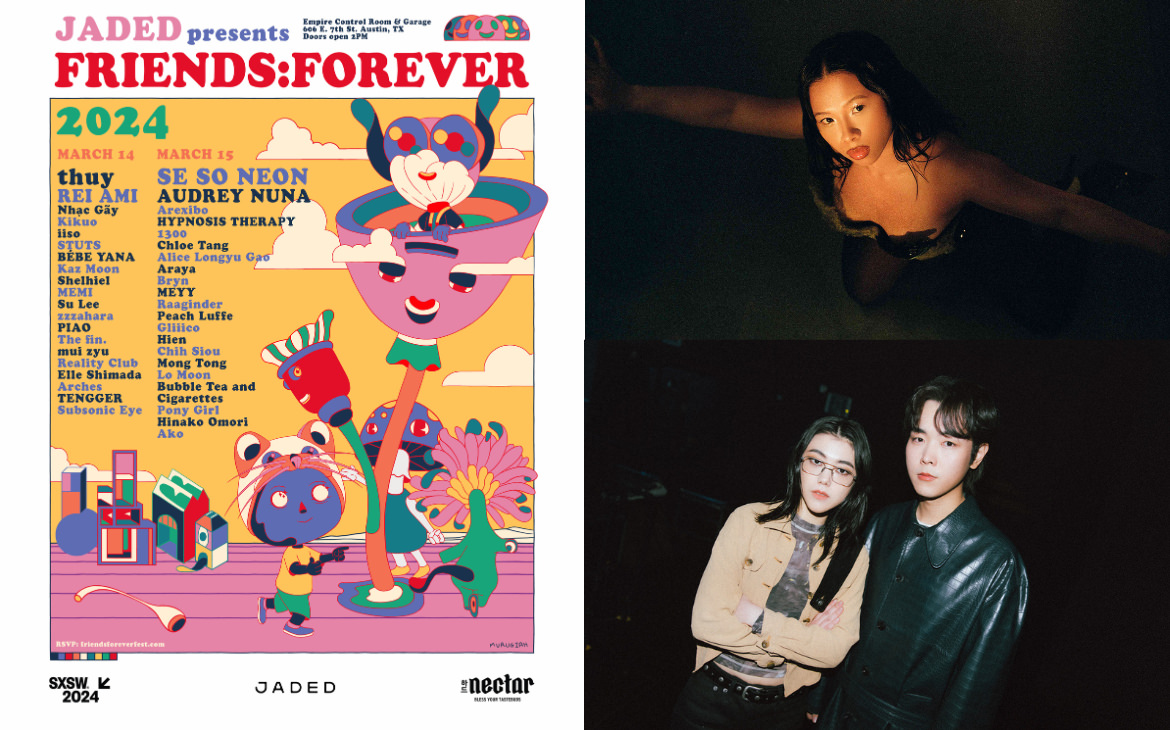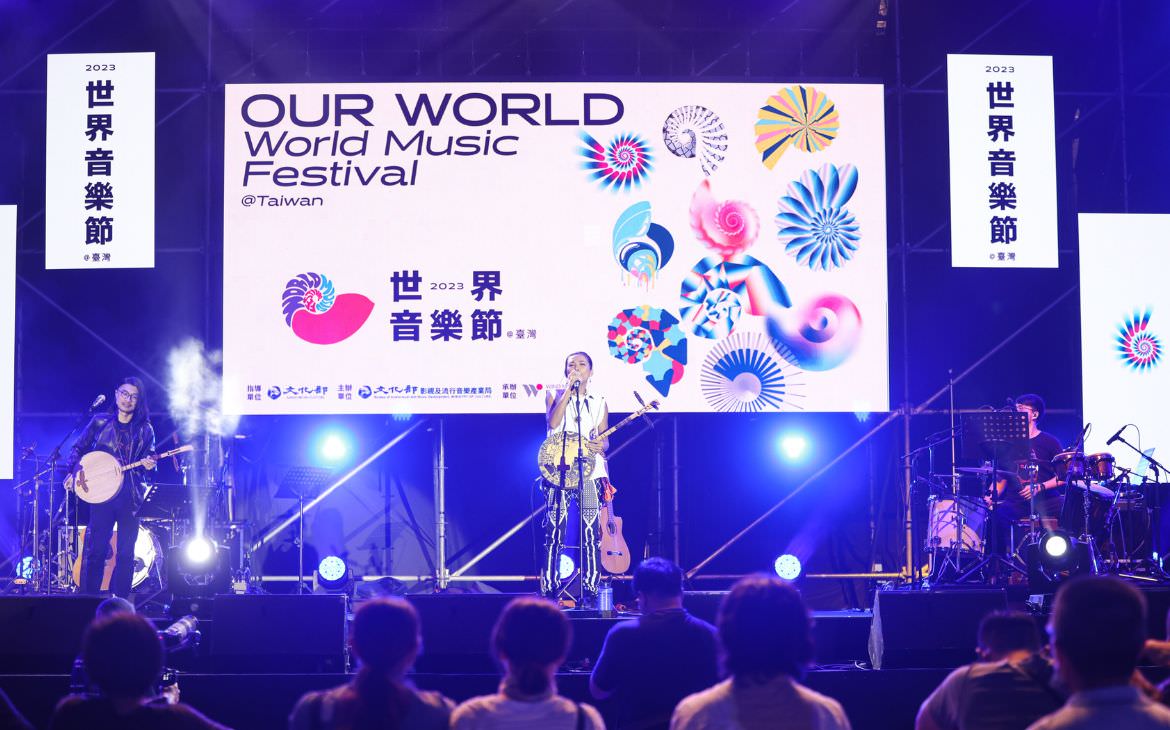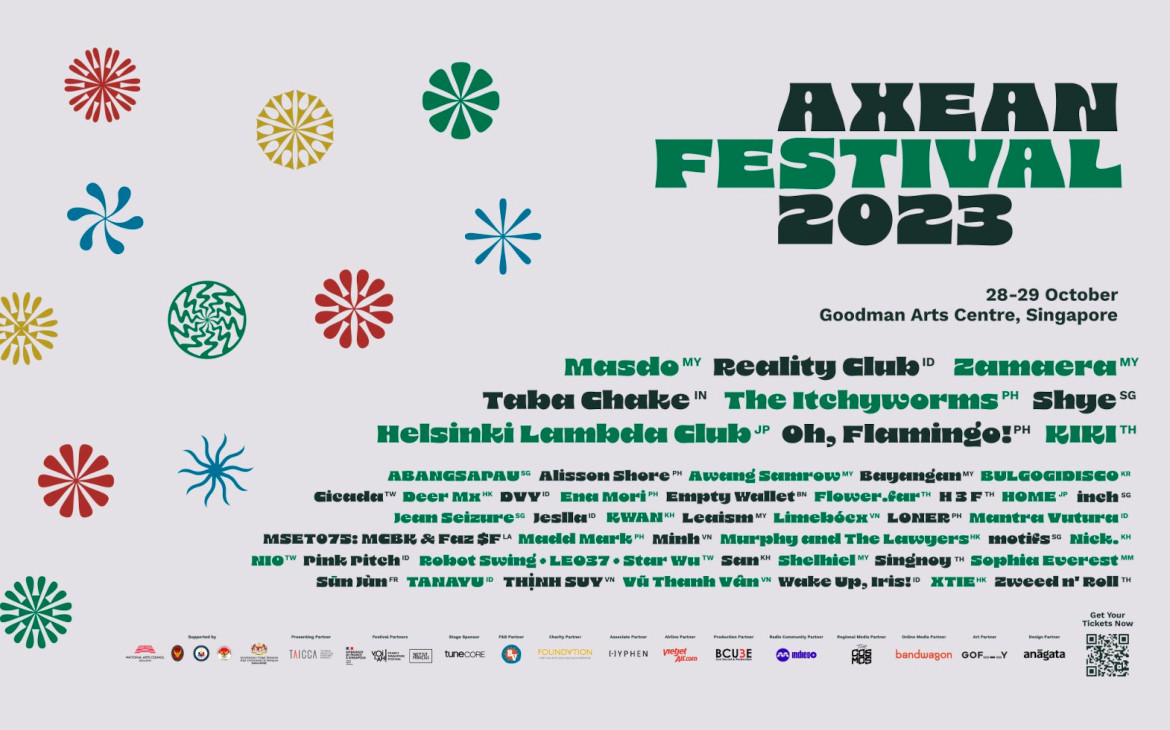Words and Header Art by MC Galang
Additional photography courtesy of Bangkok Music City
This is a part of our ongoing feature series documenting music showcases and conferences around the world.
The inaugural edition of Bangkok Music City (BMC) in Thailand brought together a rich ensemble of predominantly Asian artists and multinational delegates in a staunch effort to establish not only the country, but also the region, as a cultural and economic hub, putting forward music tourism and the concept of “music city” as sustainable markets.
Held last year from November 1 to 3, it was the busiest international music showcase festival and conference I attended by far, each day seemingly busier than the last. Of all the cities The Rest Is Noise (TRIN) participated in, Thailand’s capital was most familiar; even the nuances were strangely comforting. Bangkok Music City was co-founded by Fungjai, one of the country’s foremost music platforms, media, event organizer, and marketing agency; and NYLON Thailand, a media publication and event organizer.
BANGKOK IS HOME TO EXQUISITELY DESIGNED TEMPLES THAT REPRESENT THE CITY’S—AND THE COUNTRY’S—RICH HERITAGE. PHOTOS BY MC GALANG
The conferences took place at Thailand Creative & Design Center (TCDC) in Chareonkrung, the city’s creative district. Housed in the capital’s Grand Postal Building, it was the fitting assembly point. The program included incredibly insightful topics, ranging from creative freedom and oppression in Southeast Asia to sound design; and a host of other fruitful conversations, including the state of live music venues, online music publications, and government support in music. Representing The Rest Is Noise, I participated at the “Why and how governments should support the local music industry” panel with Indra Ameng of Indonesia’s RRREC Fest, Mak Wai Hoo of Soundscape Records, City ROARS! Festival, and Live Fact in Malaysia, and Joshua Tan, a Singapore-based musician. I also moderated the “How experience design helps create the perfect music festival” panel with Bangkok-based Pitupong Chaowakul from Big Mountain Music Festival and Wonderfruit’s Montonn Jira, along with long-time destination festival curators and founders Anup Kutty of Ziro Festival of Music in India and Natsagdorj Tserendorj of Playtime Festival in Mongolia.
Like always, I tried to attend as many sessions as I can, learning about other music communities and navigating similarities and differences, but mostly absorbing shared experiences and celebrating common causes. Some of my favorite sessions—apart from the ones I participated in, of course—were about setting up an international tour, courtesy of established music promoters; a fascinating panel about China’s music subcultures; music cities and music tourism around the world; and the increasingly vital role of music showcase festivals in helping artists enter a new market. The last one was particularly of interest to me because in the last five years that we’ve been producing and curating shows, small ones and festivals alike, we’ve deliberately focused on Asian artists, especially unsigned Filipino musicians, in our efforts to grow a well-rounded music community and forge long-term relationships that democratize arts and cultural experience. It manifested throughout the weekend, during long walks or tuk-tuk (rickshaw) rides to and from different venues; over Thai cuisine and street food, snack breaks at the bazaar in front of TCDC, or after-show drinks.
AROUND CHAREONKRUNG. PHOTOS BY MC GALANG
The artist curation abundantly featured local talent, many of whom as equally endearing and electric as our All of the Noise alum Yellow Fang and two-time The Rest Is Noise festival performer Phum Viphurit. It was delightful to catch great sets from Plastic Plastic, My Life as Ali Thomas, Pyra, TELEx TELEXs, Wave and So, and Gym and Swim. Others, we’ve also continued to listen to and/or featured on our platforms, including H3F, mamakiss, Dept, and temp. My top favorite though would be TONTRAKUL, whose style melds traditional and modern Thai music, elegant and moving. Another strong selection was Indonesia’s lineup, which ranged from gossamer-like electro-folk (Irama Pantai Setlan) to the jarring and ferocious (.Feast). I bumped into familiar faces—at this point last year, our schedules were almost unforgiving, sometimes with only one or two days of rest before jetting off to the next country—whether as fellow delegates or fellow event producers; at times, meeting Filipino expats, our intimate knowledge of humidity almost agreeable. From the Philippines, we had electronic producer AHJU$$I and singer-songwriter Timothy Run (One Click Straight and Manila Magic). I was particularly proud of Luis (AHJU$$I) and his debut live set in Bangkok, which included a rework of Nights of Rizal’s “Little Ocean.”
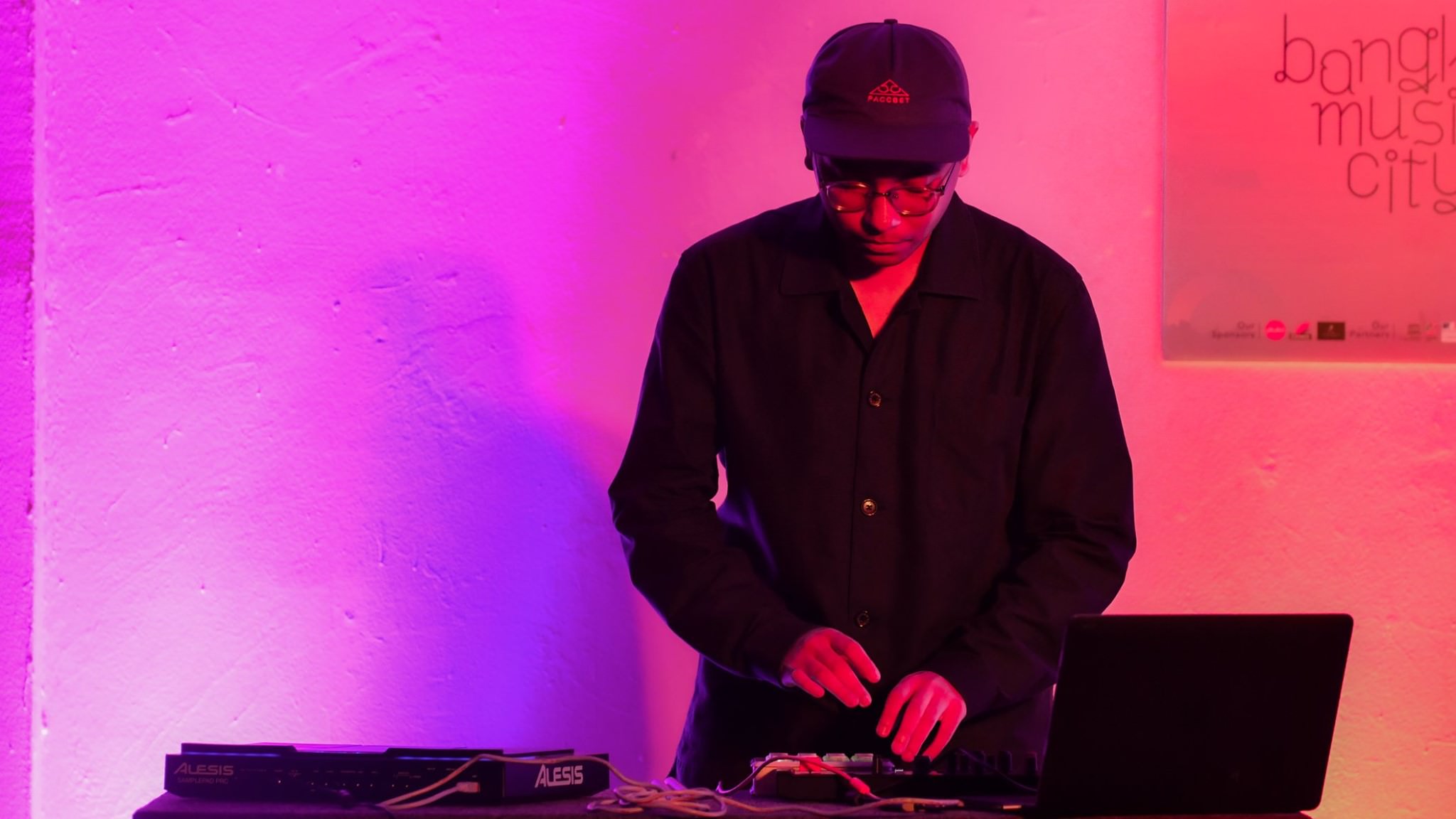
There were eight venues scattered around Chareonkrung, with the open-area main stage mounted at the TCDC grounds. One of BMC’s special features was access to free tuk-tuk rides to any of the venues. I, of course, utilized this, sometimes unnecessarily (i.e. the next venue located one or two blocks away). Some of the venues, like Soy Sauce Factory and Foo John, are almost similar to our SaGuijo and XX:XX, respectively. My favorite was the Grand Postal Building basement, which mostly showcased metal, punk, and hardcore artists, the audience thrashing around and onto each other, the raucous atmosphere complemented by superb lighting.
Perhaps the most defining characteristic of BMC, and these international music showcases in general—often the initiatives of independent players—is how its curation and programming are grounded on community-building. In Southeast Asia, at least, BMC is a great springboard of ideas and a model in fostering the D-I-Y spirit: results-oriented and ceaselessly aspirational. It’s a joy to be part of these gatherings, with everything feeling more intimate, not necessarily in scale, but in atmosphere and sense of belongingness. Perhaps it’s the innate nature of the third-world hustle, working and scrapping for everything with the leanest of resources available and lack of institutional support. In many ways, it meant a stronger and more meaningful bond between us in the region, and to an extent, Asia in general: unflappable (sometimes to a fault) and with a fortified support system: more friends than acquaintances, more trusted colleagues than faceless correspondence.
MAIN STAGE AT TCDC. PHOTOS COURTESY OF BMC
Our good friend, All of the Noise 2019 speaker and BMC and Fungjai co-founder Piyapong ‘Py’ Muenprasertdee, shared with us their journey at Bangkok Music City and their plans amid the pandemic.
The interview has been edited for clarity.
What is your official role at Bangkok Music City?
Py: My official title is co-founder, along with ‘Tom’ Pongsiri Hetrakul, the director of NYLON Thailand. We’ve agreed to split everything in half between our companies, Fungjai and NYLON Thailand: costs, profits, or responsibilities. Tom’s team takes care of the showcase festival while mine takes care of the conference. However, we and our respective teams would jump in to help the other if needed.
My main jobs were designing the content in the conference, including overall concept and individual activities; plugging activities into actual space; conference topics and panel discussion question design; inviting and confirming speakers and delegates; and approaching and communicating with local government agencies and international organizations for support and partnerships. I delegated and outsourced other activities and tasks such as flight booking, hotel booking, ground transportation and event organizing.
What are the main goals that BMC aims to achieve, especially in cultivating and promoting Thai independent music?
I think that there are a lot of talented Thai artists, but not many people know about them—not even in Thailand! I feel that some of them could actually find an audience outside of the country, like Phum Viphurit. However, when Phum released his first album, his music wasn’t really picked up by the Thai audience until he broke into the international scene. I felt like his international fame helped him gain interest from the local audience.
I also feel like language is no longer as big a barrier for music: look at K-pop. It’s huge all over the world even though most of the fans don’t speak Korean. A lot of Thai artists used to think that they can never make it abroad if they don’t write and sing English songs, but Yellow Fang—an all-female rock trio who sing exclusively in Thai—proved that idea to be totally wrong. They have dedicated fans all over the region, and perform at several music festivals like Summer Sonic in Japan, Soundrenaline in Indonesia, and even showcased at SXSW 2019 in Austin, Texas, USA.
And looking to Thailand’s neighbors, there are soooo many good artists that the world doesn’t know about! At first, my plan was to create a platform to help Thai artists gain international recognition, but now I hope that BMC could be a platform for Southeast Asian artists to be recognized on the world stage.
PHOTOS COURTESY OF BMC
How do you think the music programming (performances and conference) of BMC fit in with the local audience’s listening habits and behavior?
I think that the majority of the Thai music fans are not used to unfamiliar music, so the artists that were curated had to be quite well-known in the scene to help draw a crowd. However, we wanted to educate them in new music discovery a bit by plugging in some unknown, but interesting artists in between to surprise the audience a bit, and was pretty well-received.
As for the conference, the turnout was quite low, but was kind of expected. Thai people are not quite used to attending conferences and seminars, especially people in the music business. A few other reasons for the low turnout was probably because all the sessions were in English, which most Thais only have basic fluency in; and the artists were more focused on preparing for their showcase rather than sparing time to attend the conference.
So, for the next edition of BMC, I plan to have a separate day of seminars and workshops dedicated to the showcasing artists, and have more Thai-language content and/or simultaneous interpreters, if my budget allows.
As a new showcase music festival, what do you think are the key challenges when it comes to establishing BMC with the Thai music community—and what do you think is the role of the local government in BMC’s sustainability and meaningful support for the independent music industry in general?
As BMC is the first-of-its-kind in Thailand, and there has just been one edition of it so far, it will take another while for the music community to understand its true value. However, my plan is to show them some realistic and tangible benefits of participating in BMC to help convince them to participate. For example, I want to promote and feature artists who were invited to perform in festivals or tour overseas because of showcasing at BMC. There was a lot of interest from international delegates whom I surveyed after attending the BMC 2019 showcases, but due to the outbreak of COVID-19, all international performance plans were canceled.
Because BMC focuses on education and non-mainstream artists, consumer goods brands who are the main sponsors of music events in Thailand are disinterested due to the lack of commercial appeal. I think it could take years to grow the BMC brand to attract a significantly sized audience, but having SXSW as our inspiration, I think it is definitely possible. However, to do that requires a lot of investment, and the funding that Fungjai and NYLON Thailand currently have is definitely not enough.
We were lucky to be supported by a few Thai government agencies. One of them hired a consulting firm to conduct an economic impact assessment of BMC 2019 and found out that it was estimated to be more than USD 10 million. The money spent by participants of BMC helped drive the local economy and returned back to the country in the form of taxes. So, I think the government should be the key supporter of BMC—at least in the first few years to keep the organizers financially afloat until private sponsorship starts pouring in. In my opinion, the government wins anyway because they get all the tax money generated from the spending of BMC’s participants.
At first, my plan was to create a platform to help Thai artists gain international recognition, but now I hope that BMC could be a platform for Southeast Asian artists to be recognized on the world stage.
What are the most important qualities you look for in accepting musicians for the showcase?
I’d say talent, respect, self-reliance, effective communication, and friendliness. That’s quite a mouthful, I guess, and probably a lot more. However, I’d focus on these five qualities for the sake of brevity.
First, talent. It’s the most obvious quality. However, it doesn’t mean that the artist has to be super technical or flawless in their performance, but has to be able to connect with the audience. So, live videos with good visual and audio quality performed in front of a real audience is key to determining if they will be able to do a good show or not.
Respect. Which, in my own meaning, would include politeness, integrity, and humility. For example, you might be a great artist, but might not fit the bill of a certain festival due to different creative directions. Don’t lash out at people if they didn’t select your band.
Self-reliance. Meaning, that you work hard and blame no one else for not making it. If you don’t get what you want, try again or try it in a different way. Also, do more homework and research.
Effective communication. Really important. It would be best to send an email with all necessary information accompanied with a message tailored to the recipient. It’s not a fun job emailing back-and-forth and following up and needing to Google for your information.
Friendliness. A very important quality for showcasing artists in my opinion. Making friends is definitely better than making enemies, and friendship can go a long way. People naturally are more willing to help people they like, especially their friends. Befriending another band from somewhere else can help get you invited to perform in their hometowns. Better yet, knowing promoters, booking agents, or distributors can help you go perform abroad and spread your music. It might seem impossible to know who’s who, but if you get to know someone and they like you, they might be willing to introduce you to their friends.
What’s in store for the next edition of BMC, and how does the pandemic inform your decisions for it?
We’re looking into the possibility of creating a virtual event in parallel with the real-world one. I think that a lot of people’s savings have been depleted during the pandemic and won’t be able to travel to Bangkok for the event. So, with a virtual one, they could still be able to participate in panel discussions, workshops and watch showcases from their home countries.
Check out photos from Bangkok Music City 2019, courtesy of the festival.

